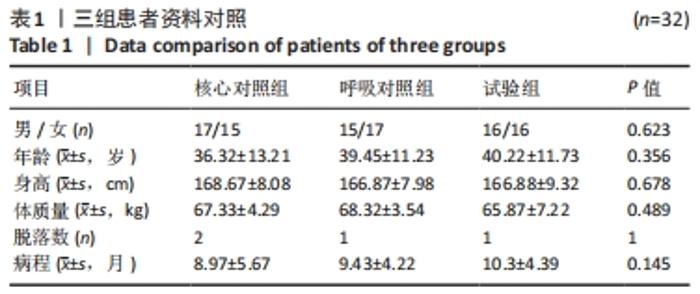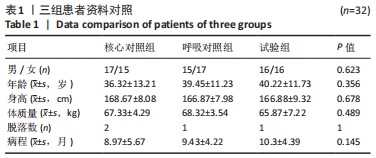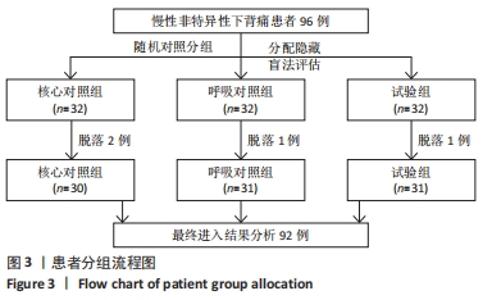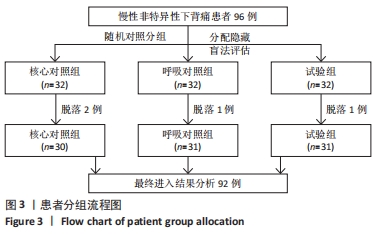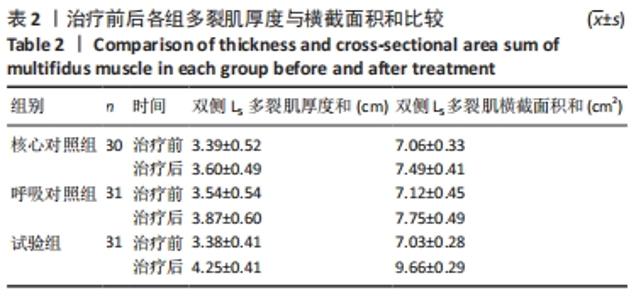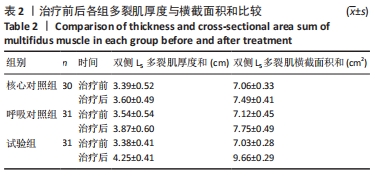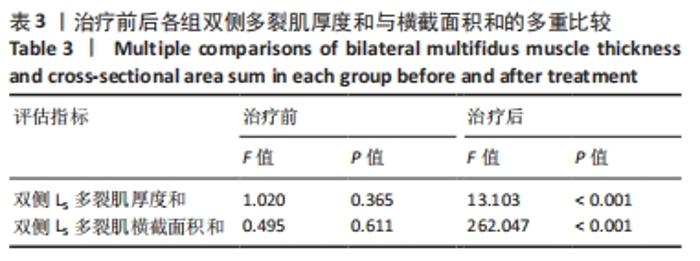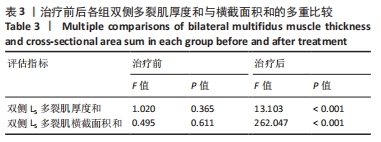[1] 吴建贤, 王斌, 石淑霞.下腰痛生物力学特点的研究进展[J].中华临床医师杂志电子版,2014,8(24):4449-4453.
[2] KOES BW, MWM VAN TULDER, THOMAS S. Diagnosis and treatment of low back pain. BMJ. 2006;332:1430-1434.
[3] 王宽,王辉昊,梁飞凡,等.非特异性下背痛保守疗法的指南回顾[J].中国康复医学杂志,2016,31(11):1280-1284.
[4] 汪敏加,孙君志. 慢性腰痛患者的核心稳定性分析及康复干预的疗效观察[J]. 上海体育学院学报,2019,43(2):91-96.
[5] 张胜利.核心力量训练对慢性腰痛患者康复效果的影响[J]. 临床医学,2019,39(7):52-54.
[6] 冯金升, 王健.腰痛的一个亚组-腰椎稳定肌异常[J].颈腰痛杂志, 2012,33(4):302-305.
[7] D’ HOOGE R, HODGES P, TSAO H, et al. Altered trunk muscle coordination during rapid trunk flexion in people in remission of recurrent low back pain. J Electromyogr Kinesiol. 2013;23(1):173-181.
[8] YOON TL, CYNN HS, CHOI SA, et al. Trunk muscle activationduring different quadruped stabilization exercises in individu-als with chronic low back pain. Physiother Res Int. 2015;20(2):126-132.
[9] 费龙攀,朱江,侯永康,等.呼吸训练对非特异性腰痛患者临床症状的改善效果研究[J].中国学校体育(高等教育),2018,5(10):88-93.
[10] 范星月,闫博馨,丁家喻,等.呼吸训练对非特异性腰痛的疗效[J].中国康复理论与实践,2018,24(1):93-96.
[11] 牟鑫,张国辉,谢兴元,等. 肌骨超声在腰痛评价中的现状[J].中国医学创新,2016,32:129-131.
[12] 郑耀超,林彩娜,柯松坚,等. 多裂肌核心稳定性训练:超声联合表面肌电监测与无监测的比较[J].中国组织工程研究,2018,22(36): 5785-5790.
[13] 张志杰, 朱毅, 刘四文,等.骨肌超声在慢性腰痛患者多裂肌厚度和横截面积测量中的应用[J].中国康复医学杂志,2013,28(3):262-263.
[14] DELITTO A, GEORGE SZ, DILLEN LRV, et al. Low back pain. J Orthop Sports Phys Ther. 2012;42(4):A1-A57.
[15] 蒋静雅. 呼吸肌训练对非特异性慢性腰痛女性腰部姿势控制能力的影响[D].北京:首都体育学院,2019.
[16] 郑竹君. CLBP患者腰椎稳定性与核心肌群功能改变的临床研究[D].昆明:昆明医科大学,2021.
[17] 张珊珊,王艳君,赖建洋,等.慢性腰痛患者腰部深层多裂肌超声形态特征分析[J].中华物理医学与康复杂志,2020,42(3):228-231.
[18] 孙文江,高美,施加加,等.腰椎稳定性训练对下背痛患者腰椎功能及多裂肌和腹横肌形态的影响[J].中华物理医学与康复杂志, 2020,42(3):242-244.
[19] SUNG DH, YOON SD, PARK GD. The effect of complex rehabilitation training for 12 weeks on trunk muscle function and spine deformation of patients with SCI. J Phys Ther Sci. 2015;27(3):951-954.
[20] WONG ML, ANDERSON RG, GARCIA K, et al. The effect of inspiratory muscle training on respiratory variables in a patient with ankylosing spondylitis: A case report. Physiother Theory Pract. 2017;33(10):805-814.
[21] 刘芳,敖丽娟. 核心肌稳定性训练对腰痛康复治疗的意义[J]. 中国康复医学杂志,2017,32(2):231-234.
[22] 马海浩.核心力量训练对慢性下腰痛的研究现状[J].当代体育科技, 2018,8(16):11-12.
[23] 梁健,施静,袁昕,等.核心稳定训练治疗非特异性腰痛的研究进展[J].中医正骨,2021,33(4):58-61.
[24] 许思毛,张敬之,刘晓龙.核心稳定训练对慢性非特异性腰痛影响的Meta分析[J].河南师范大学学报(自然科学版),2022,50(2): 150-156.
[25] 章志超,刘金明,李祖虹,等. 膈神经电刺激联合呼吸训练对脑卒中患者肺功能、躯干稳定性及平衡功能的影响[J]. 中华物理医学与康复杂志,2018,40(7):486-490.
[26] 王群,范培武,杨玲,等.使用POWER-breathe进行吸气肌训练对卒中后呼吸功能恢复的研究[J].世界最新医学信息文摘,2019, 19(23):16-17.
[27] 厉坤鹏,周宗磊,张梓楠,等.呼吸训练对帕金森病患者肺功能和运动功能的效果[J].中国康复理论与实践,2021,27(3):320-324.
[28] 梁育磊, 高谦, 乔璐,等.超声弹性成像技术在慢性非特异性腰痛诊断中的应用[J].中国康复理论与实践,2017,23(5):584-586.
[29] TEYHEN DS. Rehabilitative ultrasound imaging for assessment and treatment of musculoskeletal conditions. Manual Therapy. 2011;16(1): 44-45.
[30] BELAVY DL, ARMBRECHT G, FELSENBERG D. Real-time ultrasound measures of lumbar erector spinae and multifidus: reliability and comparison to magnetic resonance imaging. Phys Meas. 2015;36(11): 2285-2299.
|
